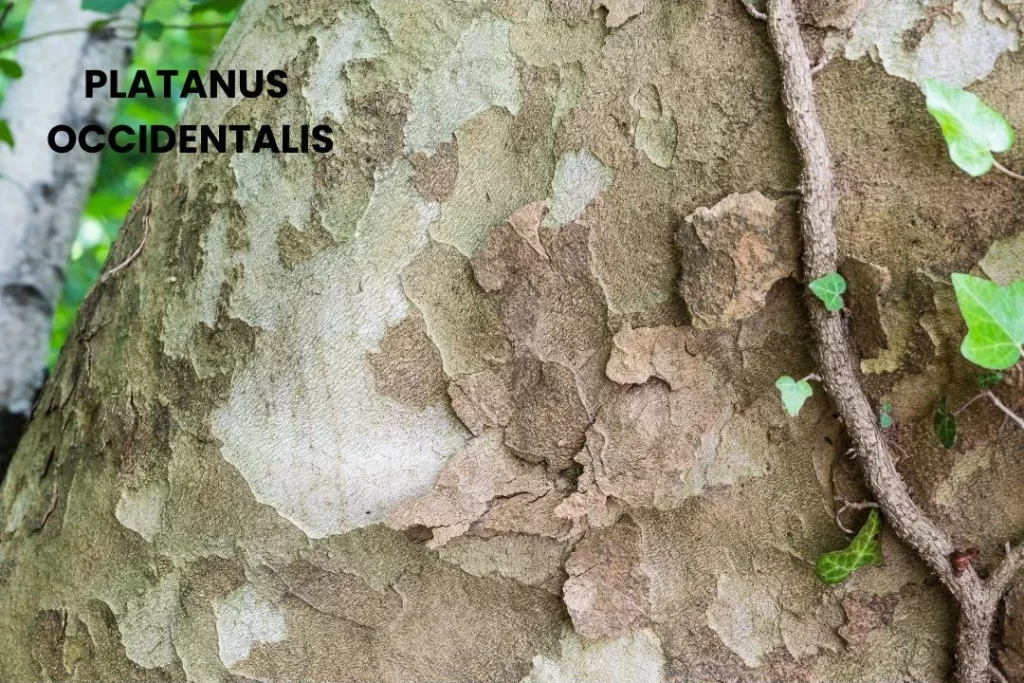Platanus occidentalis, commonly known as Sycamore or Buttonwood, is a deciduous tree that has been traditionally used for its medicinal properties.
In homeopathy, it is particularly noted for its effectiveness in treating tarsal tumours and various skin conditions, including ichthyosis.
This remedy is especially beneficial for children and has shown promise in restoring tissue in cases where destruction and cicatricial contraction have caused significant deformity.

Table of Contents
ToggleSOURCE INFORMATION
Scientific Classification
- Kingdom: Plantae
- Order: Proteales
- Family: Platanaceae
- Genus: Platanus
- Species: Platanus occidentalis
Origin and Historical Facts
Origin
- Platanus occidentalis is native to the eastern United States and Canada.
- It is commonly found along rivers, streams, and in bottomlands.
Historical Usage
- The sycamore tree has a long history of use among Native American tribes who utilized various parts of the tree for medicinal purposes.
- The bark and leaves were often used to treat respiratory ailments, skin conditions, and digestive issues.
Medicinal Uses
- In traditional medicine, the bark of the sycamore tree was used for its astringent and anti-inflammatory properties.
- It was applied to wounds, sores, and other skin conditions to promote healing and reduce inflammation.
DRUG PATHOGENESIS
- Platanus occidentalis acts on the skin and mucous membranes, particularly affecting the tarsal tissues of the eyes and the skin.
- It is known for its ability to reduce tumours, promote healing of damaged tissues, and alleviate symptoms of chronic skin conditions.
KEY CHARACTERISTICS
- Tarsal Tumours: Effective in treating both acute and chronic cases of tarsal tumors, particularly when tissue destruction and cicatricial contraction have caused deformity.
- Skin Conditions: Used in the treatment of ichthyosis and other chronic skin diseases characterized by dry, scaly skin.
- Restorative: Helps in the restoration of normal tissue conditions in cases where significant damage has occurred.
DETAILED ORGAN SYMPTOMS
EYES
- Tarsal Tumours: Reduces tarsal tumours, both acute and old neglected cases.
- Restores tissue and reduces deformity caused by cicatricial contraction, particularly effective in children.
- Application: The tincture should be applied regularly for an extended period to see significant improvement.
SKIN
- Ichthyosis: Effective in treating ichthyosis, a condition characterized by dry, scaly skin.
- Chronic Skin Diseases: Alleviates symptoms of chronic skin conditions by promoting healing and reducing inflammation.
MODALITIES
- Aggravation: Symptoms worsen with neglect and lack of treatment. Physical damage and scarring may increase deformity.
- Amelioration: Symptoms improve with regular and consistent application of the tincture. Best results seen in children.
WHAT ARE MODALITIES IN HOMOEOPATHY?
RELATIONSHIP WITH OTHER DRUGS
- Compare with: Graphites, Arsenicum album, and Sulphur, which are also used for chronic skin conditions and tissue restoration.
DOSE
- Potency of Choice: Typically used in mother tincture form. Application should be consistent and continued over a long period to achieve desired results.
Frequently Asked Questions
What is Platanus occidentalis used for?
- Platanus occidentalis is primarily used for treating tarsal tumors and chronic skin conditions such as ichthyosis.
- It is particularly effective in restoring damaged tissue and reducing deformity caused by scarring.
Is Platanus occidentalis safe to use?
- When used in recommended homeopathic potencies and applications, Platanus occidentalis is generally safe.
- It is advisable to consult with a qualified homeopathic practitioner for proper dosage and administration.
What are the side effects of Platanus occidentalis?
- Side effects are rare when used in homeopathic potencies.
- Overuse or inappropriate application may lead to irritation or an aggravation of symptoms.
Glossary of Difficult Words
- Astringent: A substance that causes the contraction of body tissues, typically used to reduce bleeding from minor abrasions.
- Cicatricial Contraction: The process of scar tissue formation that can lead to tightening and deformity of the affected area.
- Deciduous: A type of tree or shrub that sheds its leaves annually.
- Ichthyosis: A family of genetic skin disorders characterized by dry, scaly skin.
- Mucous Membranes: The moist tissue lining certain internal organs and body cavities, including the nose, mouth, and lungs.
- Tarsal Tumours: Tumours located in the tarsal (eyelid) region, which can cause significant discomfort and deformity if not treated.
